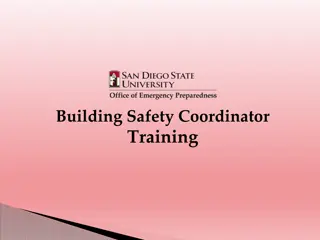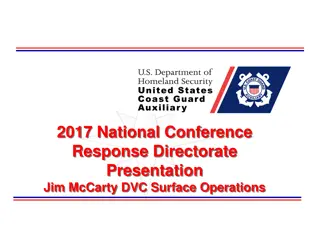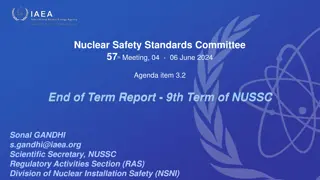Building a Strong Safety Culture at NMT: Responsibilities and Best Practices
In the quest to enhance safety culture at NMT, the collective responsibility for safety is emphasized, outlining the key roles from leadership to lab technicians. The document highlights the four levels of safety, HAZMAT responsibilities, best management practices, and the importance of adhering to federal and state regulations. It stresses the significance of safety culture in promoting a safe environment for all individuals within the organization.
Download Presentation

Please find below an Image/Link to download the presentation.
The content on the website is provided AS IS for your information and personal use only. It may not be sold, licensed, or shared on other websites without obtaining consent from the author.If you encounter any issues during the download, it is possible that the publisher has removed the file from their server.
You are allowed to download the files provided on this website for personal or commercial use, subject to the condition that they are used lawfully. All files are the property of their respective owners.
The content on the website is provided AS IS for your information and personal use only. It may not be sold, licensed, or shared on other websites without obtaining consent from the author.
E N D
Presentation Transcript
Building a Safety Culture at NMT Spring 2023 Benjamin Thomas Hazmat and Lab Safety Specialist Office of Research
Who is Responsible for Safety? Everyone! Safety is the responsibility of everyone on campus! Everyone from the Board of Regents, to the Division Directors and Department Chairs, to lab technicians and students. Good safety practices involve the entire community! Office of Research
Four Levels of Safety Institutional: Policies, procedures and guidelines Department*: Policies, procedures, and guidelines Laboratory: Training matrices, standard operating procedures, PPE Individual: follow all of the above *The term Department used throughout this document may also refer to Division and/or Bureau where applicable. Office of Research
HAZMAT Responsibilities Providing hazardous, universal, and radioactive waste disposal services. Providing guidance, consultations and technical assistance to departments, PI s and lab workers. Creating and revising institutional safety programs. Reviewing department and lab policies and procedures, and providing feedback for divisions/bureaus/departments and PI s. Basic safety trainings and How To guidance related to hazardous waste and/or laboratory safety. Office of Research
Best Management Practices Appoint a Department Safety Officer. Ensure there is a Department Chemical Hygiene and/or Safety Plan (as applicable). Ensure compliance with the plan(s). Ensure the Chemical Hygiene and/or Safety plan is reviewed and updated annually. Perform annual Department safety training. Office of Research
Why These Best Practices? Federal Regulations: 29 CFR 1910.1450 and 29 CFR 1910.1200 State Regulations: NMAC 11.5.1 and NM Health and Safety Act Your Department Safety Plan will address specific issues related to your department and allows you to define department safety within the scope of these regulations. To promote the importance of safety and improve safety culture throughout your department. Office of Research
What is Safety Culture? Safety culture is the collection of the beliefs, perceptions and values that employees share in relation to risks within an organization, such as a workplace or community. Safety culture can be positive or negative. Who is responsible for creating a positive safety culture? Everyone!!!! Office of Research
Building Positive Safety Culture in your Department Define safety responsibilities in your department. These should be outlined in your safety plan, as applicable. Create a training matrix for your department . Create and enforce a reporting policy for all accidents and near misses. Look for ways to prevent recurrences rather than lay blame. Celebrate Successes. Office of Research
Next Steps 2023 Set up a date to meet and go over your department safety needs. Appoint a department safety officer (where applicable), if you have not already done so. Set a completion date for your department safety plan. Enhance the safety culture in your department. Office of Research
Next Steps 2024 Create a department safety plan, which may include: Hazardous materials Hazardous equipment Hazardous operations Electrical safety Create a department specific safety training matrix Enhance the safety culture in your department Office of Research
Questions, Comments, or Concerns? Please contact NMT s HAZMAT and Lab Safety Specialist with any questions, comments, or concerns regarding Hazardous Waste and/or Laboratory Safety. HAZMAT and Lab Safety Specialist: Benjamin Thomas Phone: 575-517-0646 Email: ben.thomas@nmt.edu or hazmat@nmt.edu Office of Research























